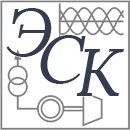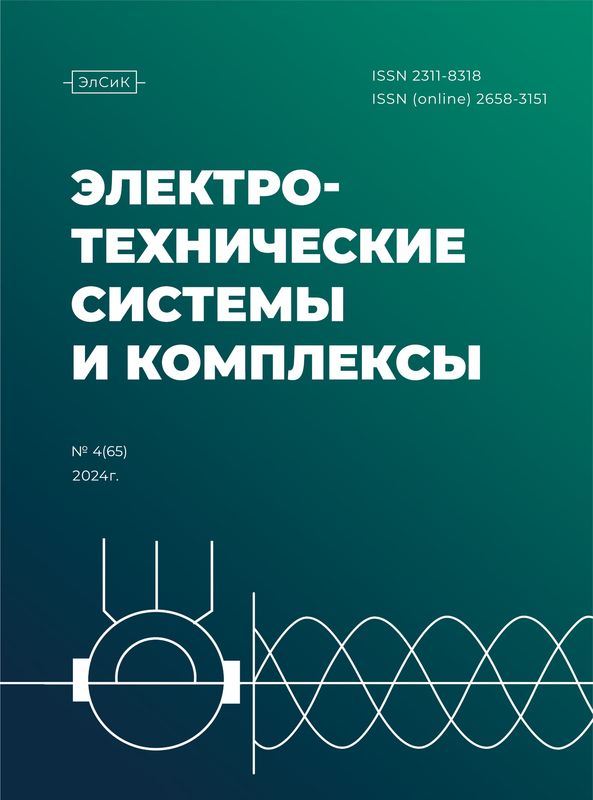Abstract
Load coordination (balancing) between the main electric drives of the upper and lower rolls (MUR and LUR) at thick-plate rolling mills is a crucial task. The conducted studies have shown that when rolling sheets of "heavy" product range, there is a difference in torques in a significant part of the pass, while in the first passes, the speeds and torques coordination is not ensured. At loads above the nominal, a more loaded electric drive can reach the torque limit. This leads to the controllability violation and to an increase in electrical energy losses due to a decrease in efficiency. This conclusion is confirmed by previously published results obtained for electric drives of the 5000 thick-plate mill. The load sharing controller (LSC) included in the electric drive control system does not provide the required speed in the load matching mode, which is confirmed by the modeling method and numerous experiments. This predetermined the improvement in the LSC algorithm due to the use of a fuzzy logic (FL) device. The contribution of the article is that using the Fuzzy Logic Toolbox for MatLab resource, a fuzzy speed control RDN with two channels was developed: by the difference in engine torques and by the derivative of the difference in torques. The structure including fuzzification blocks, a set and application of fuzzy controller (FC) rules, and defuzzification is considered. The membership signals set of the input variables for the fuzzification blocks to linguistic variables is substantiated. The rules of the developed fuzzy controller for the two named channels are specified. The modes of gripping the rolled stock by rolls and matching loads for various membership functions are simulated. The processes during the implementation of various input actions, including those described by the first and second order Gaussian functions, as well as during a decrease in the permanent zone of the difference fuzzification in torques are studied. The simulation shows that the implementation of the second order Gaussian function is the optimal solution. In this case, the time of torque matching after switching on the RDN is tenths of a second, which exceeds the expected results. This confirms the feasibility of implementing the developed RDN with NL on the 5000 mill.
Keywords
fuzzy logic, rolling mill, electric drive of rolls, load sharing controller, development, input action functions, modeling, recommendations
1. Stil V.J., Varga T., Bensic T., Barukcic M. A Survey of Fuzzy Algorithms Used in Multi-Motor Systems Control. Electronics. 2020, No. 9(11), 1788. doi: 10.3390/electronics 9111788
2. Wu Y., Cheng Y., Wang Y. Research on a Multi-Motor Co-ordinated Control Strategy Based on Fuzzy Ring Network Control. IEEE Access. 2020, Vol. 8, pp. 39375-39388. doi: 10.1109/ACCESS.2020.2974906
3. Mitrovic N., Kosti´c V., Petronijevic M., Jeftenic B. Multi-Motor Drives for Crane Application. Adv. Electr. Comput. Eng. 2009, no. 9(3), pp. 57-62. doi: 10.4316/AECE.2009. 03011
4. Niu F., K Sun., Huang S., Hu Y., Dong L., Fang Y. A Re-view on Multi-motor Synchronous Control Methods. IEEE Transactions on Transportation Electrification. 2022, no. 9(1), pp. 22-33. doi: 10.1109/TTE.2022.3168647
5. Zhao H., Chen W., Qu F., Chen H. Research on power balance of multi-motor drive for mining belt transportation. 2022 7th International Conference on Electronic Technology and Information Science (ICETIS). Harbin, China, 2022. Pp. 1-5. Available at: https://ieeexplore.ieee.org/document/9788591 (accessed 27 July 2025)
6. Hu Z., Yang J., Zhao Z., Sun H., Che H. Multi-objective optimization of rolling schedules on aluminum hot tandem rolling. Int. J. Adv. Manuf. Technol. 2016, no. 85, pp. 85-97. doi: 10.1007/s00170-015-7909-1
7. Weizheng L., Ming Z., Ruicheng Z., Ying S. The Research on Load Balance Controller of Roller Single Roller Drive System Based on Fuzzy PID. 2020 Chinese Control and Decision Conference (CCDC). IEEE, 2020. doi: 10.1109/ CCDC49329.2020.9164398
8. Yang J.M., Su B., Lv J., Che H.J. The improved load balance adjustor of multi-motor driving system. 32nd Chinese Control Conference (CCC). IEEE, 2013. Pp. 5305-5310. Available at: https://ieeexplore.ieee.org/document/6640363 (accessed 27 July 2025)
9. Zhu C., Tu Q., Jiang C., Pan M., Huang H. A Cross Cou-pling Control Strategy for Dual-Motor Speed Synchronous System Based on Second Order Global Fast Terminal Sliding Mode Control. IEEE Access. 2020, vol. 8, pp. 217967-217976. doi: 10.1109/ACCESS.2020.3042256
10. Kucsera P., Beres Z. Hot Rolling Mill Hydraulic Gap Control (HGC) thickness control improvement. Acta Polytech-nicaHungarica. 2015, no. 12(6), pp. 93-106. Available at: https://acta.uni-obuda.hu/Kucsera_Beres_62.pdf (accessed 27 July 2025)
11. Khramshin V.R., Zinchenko M.A., Loginov B.M., Karandaev A.S. Method of plate rolling mill electric drive control in asymmetrical rolling mode of the strip plate head. El-ektrichestvo [Elektrichestvo], 2023, no. 4, pp. 61-72. (In Russian) doi: 10.24160/0013-5380-2023-4-61-72
12. Chikishev D.N., Pozhidaeva E.B. Analysis of strip head vertical bending causes during hot rolling on the basis of mathematical modeling. Izvestiya vysshikh uchebnykh zavedeniy. Chernaya metallurgiya. [Izvestiya. Ferrous Met-allurgy], 2016, no. 59(3), pp. 204-208. (In Russian) doi: 10.17073/ 0368-0797-2016-1-204-208
13. Karandaev A.S., Zinchenko M.A., Semitko A.Y., Evdokimov S.A., Petukhova O.I. Technological Causes of Vertical Workpiece Asymmetry in Plate Rolling Mills. Lecture Notes in Mechanical Engineering. 2023. doi: 10.1007/978-3-031-14125-6_74
14. Loginov B.M., Khramshin V.R., Zinchenko M.A., Radi-onov A.A. Rolling Level Impact on Roll Bending at Stand Output. Russian Workshop on Power Engineering and Au-tomation of Metallurgy Industry: Research & Practice (PE-AMI). IEEE, 2023. Pp. 171-176. doi: 10.1109/PEAMI58441.2023.10299904
15. Gasiyarov V.R., Radionov A.A., Loginov B.M., Zinchen-ko M.A., Gasiyarova O.A., Karandaev A.S., Khramshin V.R. Method for Defining Parameters of Electromechanical System Model as Part of Digital Twin of Rolling Mill. Journal of Manufacturing and Materials Processing. 2023, no. 7(5), 183. doi: 10.3390/jmmp7050183
16. Voronin S.S., Radionov A.A., Karandaev A.S., Erdakov I.N., Loginov B.M., Khramshin V.R. Justifying and Implementing Concept of Object-Oriented Observers of Thermal State of Rolling Mill Motors. Energies. 2024, no. 17(16), 3878. https://doi.org/10.3390/en17163878
17. Voronin S.S., Radionov A.A., Karandaev A.S., Lisov-sky R.A., Loginov B.M., Zinchenko M.A., Khramshin V.R., Erdakov I.N. Improving Efficiency of Rolling Mill Stand Electric Drives Through Load Alignment. Energies. 2025, no. 18(12), 3175. doi /10.3390/en18123175
18. Khramshin V.R., Karandaev A.S., Khramshin R.R., Logi-nov B.M., Zinchenko M.A. Sposob upravleniya privodnymi dvigatelyami kleti tolstolistovogo prokatnogo stana s indi-vidualnym elektroprivodom valkov [Control method of plate rolling mill stand drive motors with individual roll electric drive]. Patent RF, no. 2822900, 2024.
19. Terekhov V.M., Osipov O.I. Sistemy upravleniya elektro-privodov. [Electric drive control systems]. Moscow, Publish-ing center «Academy», 2006. 304 p. (In Russian)
20. Membership function description. Available at: https://studopedia.ru/7_124267_opisanie-funktsiy-MatLab.html (accessed 27 July 2025). (In Russian)
21. Basics of Hardware-in-the-Loop Simulation. Available at: https://www.mathworks.com/help/simscape/ug/what-is-hardware-in-the-loop-simulation.html. (accessed 27 July 2025)
22. Perdukova D., Fedor P., Lacko M. DC motor fuzzy model based optimal controller. MM Science Journal. 2021, pp. 4879-4885. doi: 10.17973/MMSJ.2021_10_2021033
23. Karandaev A.S., Radionov A.A., Khramshin V.R., Gostev A.N. Method of strip gripping correction speeds at continuous stand train of a wide-strip hot rolling mill. El-ektrotekhnicheskie sistemy i kompleksy [Electrotechnical Systems and Complexes], 2012, no. 20, pp. 141-149. (In Russian)
Loginov B.M. Fuzzy Controller for Load Division Between Interconnected Electric Drives at a Rolling Stand. Elektrotekhnicheskie sistemy i kompleksy [Electrotechnical Systems and Complexes], 2025, no. 3(68), pp. 4-14. (In Russian). https://doi.org/10.18503/2311-8318-2025-3(68)-4-14










